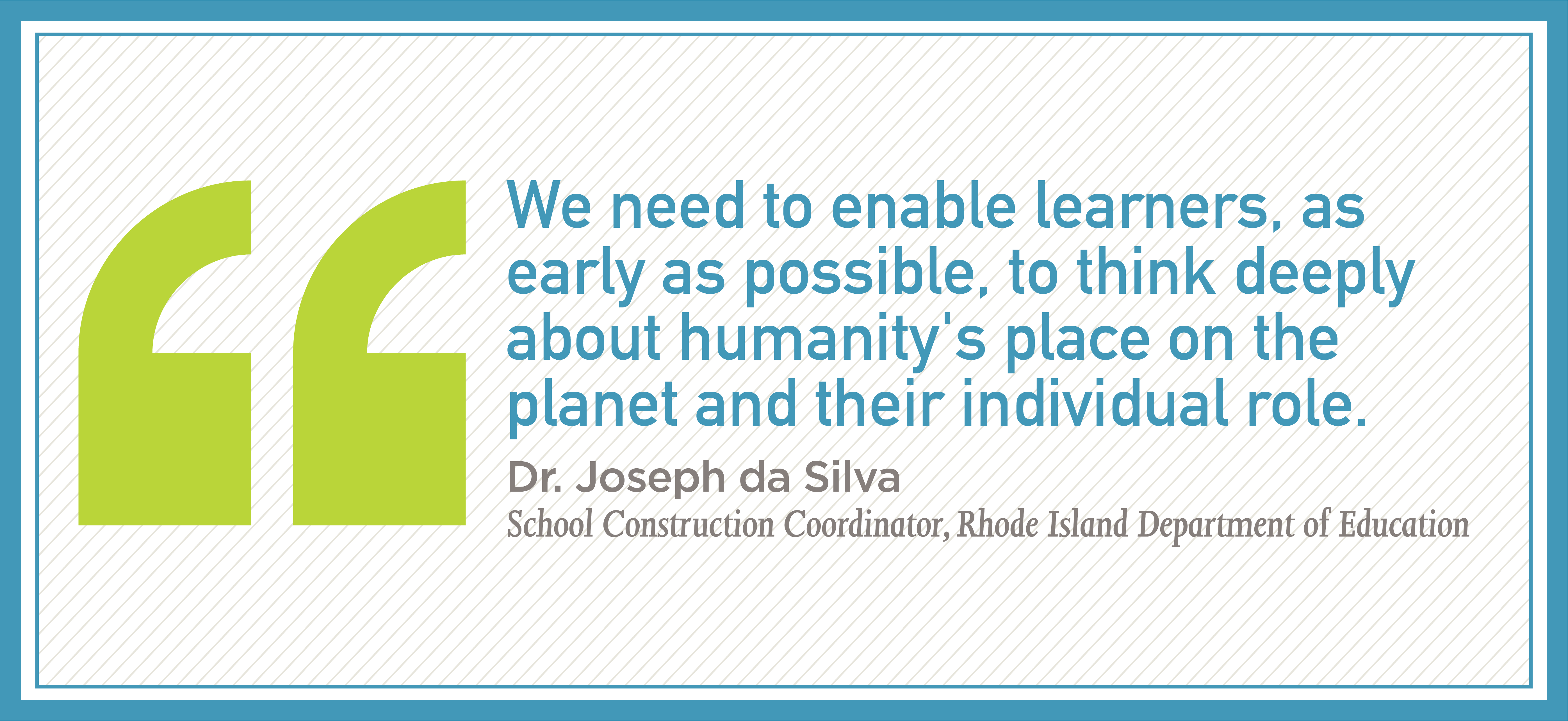
The Green Schools Conference and Expo, which convened this week in Atlanta, Georgia, highlighted the intersection of sustainability, curriculum and programming, building design, facilities management, health and wellness and community service. During the conference, the Center for Green Schools at USGBC and the Green Schools National Network (GSNN) announced the recipients of the 2017 Best of Green Schools awards, which recognize individuals, institutions, projects and events that embody the most impactful efforts in school sustainability.
As with learning habits, environmental and sustainability literacy should start young. Although many adults (an estimated 65 million in the U.S.) are actively engaged in environmental issues and practice environmentally friendly behaviors, one of the ideal places for learning how environmental systems work in and around daily life is the classroom.
The past 10 years have seen an explosion of interest in connecting youth to nature, which has invigorated environmental education in preschools and other early learning centers and spurred a more organized push for legislative support for environmental education in K–12 programming, according to the National Environmental Education Foundation.
More and more K–12 educational institutions are increasing the momentum of the green schools movement through their curriculum, while at the same time reducing the environmental impacts of their facilities and improving the comfort and quality of the classroom through sustainable design and LEED certification. Currently, 9,434 education projects in the U.S. for grades K–12 and higher have either certified to LEED standards or are seeking certification.
We asked this year’s honorees to share what they believe is the optimal path to environmental and sustainability literacy:
- "Fostering commitment to stewardship from an early age is achieved through education. As youth learn of the environmental challenges confronting our planet, they will be inspired to take responsible actions and become creative problem solvers for sustainability.” —Dr. Karla Utting, Former Executive Director, Dream in Green

- “The key is understanding and collaboration. With YouthCAN, we have the opportunity to work hands on with students and complete projects together, allowing them to both learn about climate change as an issue and see how they can make a difference, inspiring them to continue their work and expand their influence.” —Hannah Reed, Student, Boston Latin School YouthCAN Class of 2017

- “If we want our students to understand how to work toward a sustainable future, they need to see sustainability in action, in the building where they spend the majority of their waking hours. This means teaching sustainability not just in the classroom, but in and with the school itself.” —Nik Kaestner, Director of Sustainability, San Francisco Unified School District

- “In California, we have a supportive State Board of Education and State Superintendent of Public Instruction, legislation that calls for environmental principles and concepts to be part of standards-based instruction, adoption of new science standards where environmental content is prominent, a robust community of program providers, and a thriving Green Ribbon Schools program. This coherence across the entire system makes this ‘moment for the movement’ possible.” —Karen Cowe, CEO, Ten Strands and Project Director, California Environmental Literacy Steering Committee

